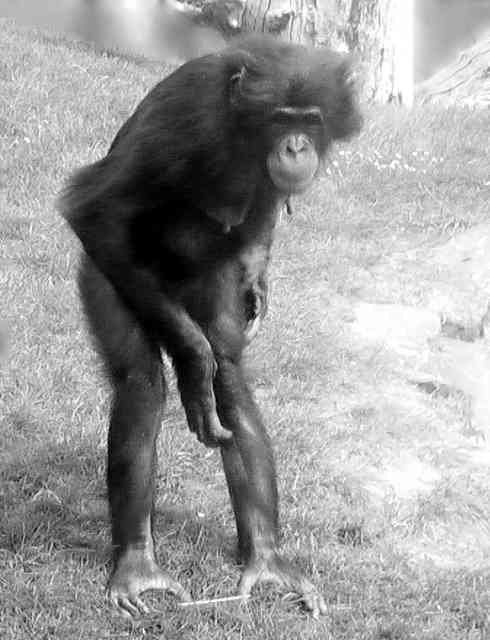



|
Ph.D. Project |
 |  |
 |
|
 |
|
|
|

|
|
Supervisors: Klaus Zuberbuhler & Juan-Carlos Gomez
University of St Andrews 2011
Abstract: A central issue in the study of primate communication is the extent to which individuals adjust their behaviour to the attention and signals of others, and manipulate others’ attention to communicate about external events. I investigated whether 13 chimpanzees (Pan troglodytes spp.), 11 bonobos (Pan paniscus), and 7 orangutans (Pongo pygmaeus pygmaeus) followed conspecific attention and led others to distal locations. Individuals were presented with a novel stimulus, to test if they would lead a conspecific to detect it in two experimental conditions. In one the conspecific faced the communicator, while another required the communicator to first attract the attention of a conspecific. All species followed conspecific attention, but only bonobos in conditions that required geometric attention following and that the communicator first attract the conspecific‘s attention. There was a clear trend for the chimpanzees to selectively produce a stimulus directional ‘hunching’ posture when viewing the stimulus in the presence of a conspecific rather than alone (the comparison was statistically non-significant, but very closely approached significance [p = 0.056]), and the behaviour consistently led conspecifics to look towards the stimulus. An observational study showed that ‘hunching’ only occurred in the context of attention following. Some chimpanzees and bonobos consistently and selectively combined functionally different behaviours (consisting of sequential auditory-stimulus- directional-behaviours), when viewing the stimulus in the presence of a non-attentive conspecific, although at species level this did not yield significant effects. While the design did not eliminate the possibility of a social referencing motive (“look and help me decide how to respond”), the coupling of auditory cues followed by directional cues towards a novel object, is consistent with a declarative and social referential interpretation of non-verbal deixis. An exploratory study, which applied the ‘Social Attention Hypothesis’ (that individuals accord and receive attention as a function of dominance) to attention following, showed that chimpanzees were more likely to follow the attention of the dominant individual. Overall, the results suggest that the paucity of observed referential behaviours in apes may owe to the inconspicuousness and multi-faceted nature of the behaviours.. |
 |
|
| Home |